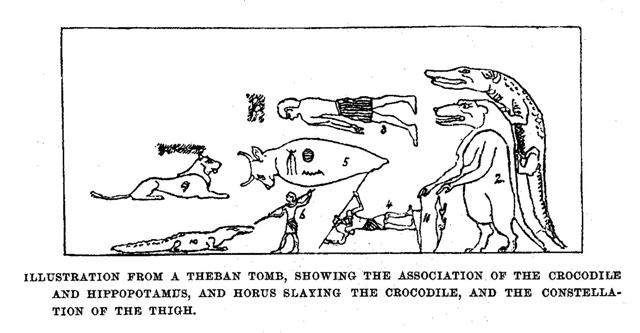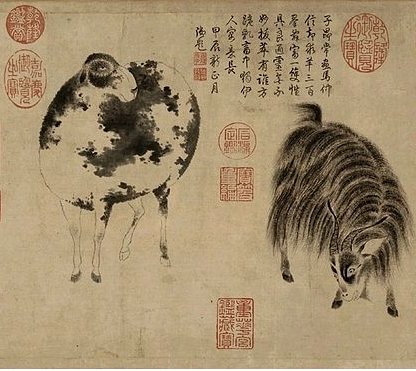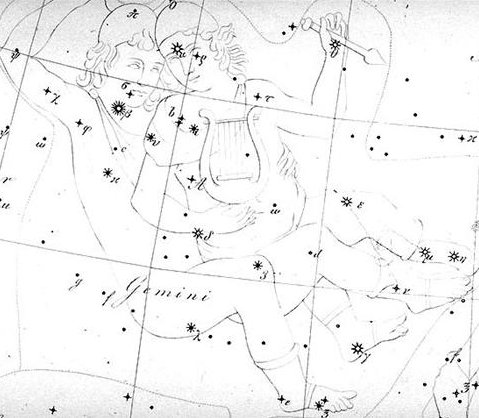Castor and Pollux could evidently have been attuned to the water circulation, and the Explorers had made their landfall on Easter Island 4 days after "May 28 (*68):
... Xiuhtecuhtli, the fire god, as Huehueteotl, 'the old god at the centre'. One of the oldest deities of ancient America, this clay figure from the Veracruz culture shows him seated with a brazier on his head. Xiuhtecuhtli was lord of the present 'Sun', or era, his ceremonies being particularly important at the end of every fifty-two-year cycle when all fires were put out and a fresh one was kindled on a prisoner's breast in order to keep time moving ...
... The old man realized that he was now at a critical point. If the Nazarene did not understand this business of coming and going, he would not understand anything else. He wanted to say that what made life was not so much force as the movement of forces. He reverted to the idea of a universal shuttle service. 'The rays drink up the little waters of the earth, the shallow pools, making them rise, and then descend again in rain.' Then, leaving aside the question of water, he summed up his argument: To draw up and then return what one had drawn - that is the life of the world ...
The day after the midnight culmination of Antares the first son of Hua Tava
viz. Kuukuu (probably alluding to Aries = Babylonian agru) was ordered to begin digging. ... During his descent the ancestor still possessed the quality of a water spirit, and his body, though preserving its human appearance, owing to its being that of a regenerated man, was equipped with four flexible limbs like serpents after the pattern of the arms of the Great Nummo. The ground was rapidly approaching. The ancestor was still standing, his arms in front of him and the hammer and anvil hanging across his limbs. The shock of his final impact on the earth when he came to the end of the rainbow, scattered in a cloud of dust the animals, vegetables and men disposed on the steps. When calm was restored, the smith was still on the roof, standing erect facing towards the north, his tools still in the same position. But in the shock of landing the hammer and the anvil had broken his arms and legs at the level of elbows and knees, which he did not have before. He thus acquired the joints proper to the new human form, which was to spread over the earth and to devote itself to toil ... This digging was a backbreaking work and eventually it forced Kuukuu down, to no longer remain visible on the face of the earth. ... Ishtar, scorned, goes up to heaven in a rage, and extracts from Anu the promise that he will send down the Bull of Heaven to avenge her. The Bull descends, awesome to behold. With his first snort he downs a hundred warriors. But the two heroes tackle him. Enkidu takes hold of him by the tail, so that Gilgamesh as espada can come in between the horns for the kill. The artisans of the town admire the size of those horns: 'thirty pounds was their content of lapis lazuli'. (Lapis lazuli is the color sacred to Styx, as we have seen. In Mexico it is turquoise.) Ishtar appears on the walls of Uruk and curses the two heroes who have shamed her, but Enkidu tears out the right thigh of the Bull of Heaven and flings it in her face, amidst brutal taunts. It seems to be part of established procedure in those circles. Susanowo did the same to the sun-goddess Amaterasu, and so did Odin the Wild Hunter to the man who stymied him. A scene of popular triumph and rejoicings follows. But the gods have decided that Enkidu must die, and he is warned by a somber dream after he falls sick. The composition of the epic has been hitherto uncouth and repetitious and, although it remains repetitious, it becomes poetry here. The despair and terror of Gilgamesh at watching the death of his friend is a more searing scene than Prince Gautama's 'discovery' of mortality. 'Hearken unto me, O elders, (and give ear) unto me! // It is for Enk(idu), my friend, that I weep, // Crying bitterly like unto a wailing woman // (My friend), my (younger broth)er (?), who chased // the wild ass of the open country (and) the panther of the steppe. // Who seized and (killed) the bull of heaven; // Who overthrew Humbaba, that (dwelt) in the (cedar) forest - ! // Now what sleep is this that has taken hold of (thee)? // Thou hast become dark and canst not hear (me)'. // But he does not lift (his eyes). // He touched his heart, but it did not beat. // Then he veiled (his) friend like a bride (...) // He lifted his voice like a lion // Like a lioness robbed of (her) whelps ... 'When I die, shall I not be like unto Enkidu? // Sorrow has entered my heart // I am afraid of death and roam over the desert ... // (Him the fate of mankind has overtaken) // Six days and seven nights I wept over him // Until the worm fell on his face. // How can I be silent? How can I be quiet? // My friend, whom I loved, has turned to clay'. 'Hearken unto me, O elders, (and give ear) unto me! // It is for Enk(idu), my friend, that I weep, // Crying bitterly like unto a wailing woman // (My friend), my (younger broth)er (?), who chased // the wild ass of the open country (and) the panther of the steppe. // Who seized and (killed) the bull of heaven; // Who overthrew Humbaba, that (dwelt) in the (cedar) forest - ! // Now what sleep is this that has taken hold of (thee)? // Thou hast become dark and canst not hear (me)'. // But he does not lift (his eyes). // He touched his heart, but it did not beat. // Then he veiled (his) friend like a bride (...) // He lifted his voice like a lion // Like a lioness robbed of (her) whelps ... 'When I die, shall I not be like unto Enkidu? // Sorrow has entered my heart // I am afraid of death and roam over the desert ... // (Him the fate of mankind has overtaken) // Six days and seven nights I wept over him // Until the worm fell on his face. // How can I be silent? How can I be quiet? // My friend, whom I loved, has turned to clay'.
As I remember it they were of equal strength, Gilgamesh and Enkidu, they were like twins. But Enkidu was hairy.
So far everything appears to be in some kind of order. However, there is obviously something fundamentally wrong. When the Explorers reached Easter Island it was at the the beginning of the solstice month (Maro) - when Mother Nature was asleep. South of the equator Maro was the month of winter solstice when the ground was infertile and hard (maro):
According to Manuscript E Kuukuu worked to Maro 15 when he had established his yam plantation. But planting of yams (growing below the ground) should be done in the spring month of September (corresponding to the northern March). The answer to this riddle ought to lie ahead, and probably just in front of our noses (snouts, beaks):
|
||||||||||||||||||||||||||||||||||||||||||||||||||||||||||||||||||||||||||||||||||||||||||||||||||||||||||||||||||||||||||||||||||||||||||||||||||||||||||||||||||||||||||||||||||||||||||||||||||||||||||||||||||||||||||||||||||||||||||||||||||||||||||||||













